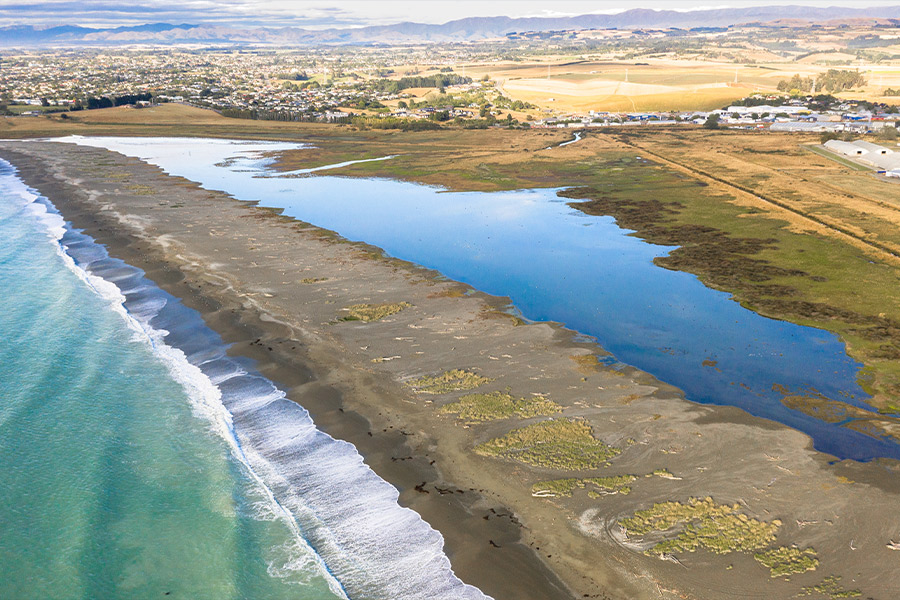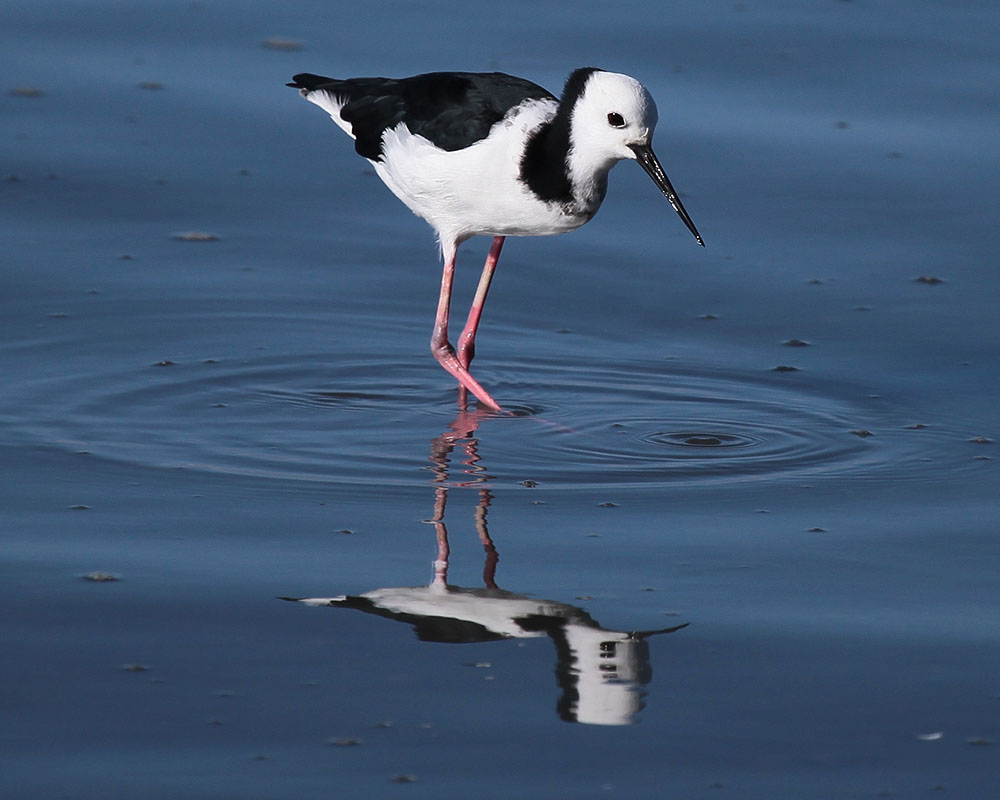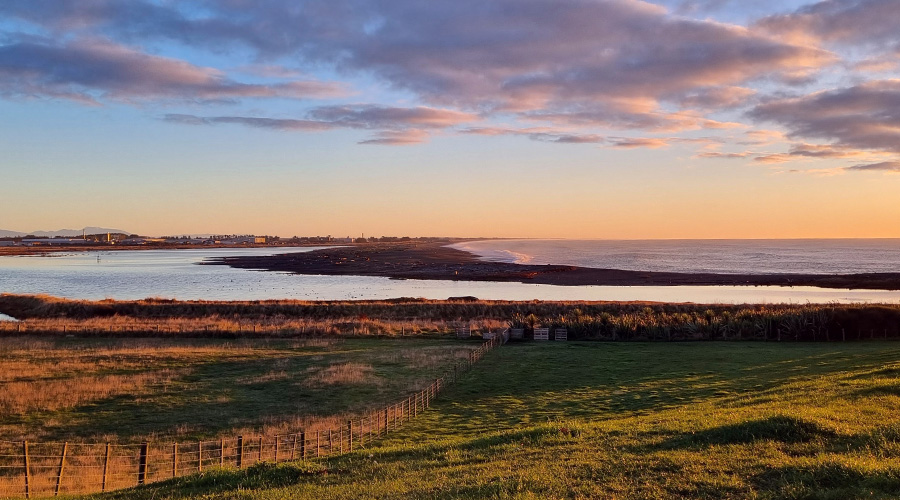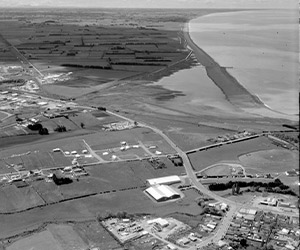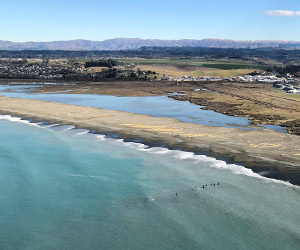Waitarakao Washdyke Lagoon Catchment
Waitarakao Washdyke Lagoon is a special place for wildlife and mahika kai food gathering, but now it's in decline and the habitat for plants and animals has degraded.
Department of Conservation, Environment Canterbury, Te Rūnanga o Arowhenua and Timaru District Council have joined together to make a plan to restore the health of the lagoon and its wider catchment. To find out more and get involved, visit the Our Waitarakao consultation website.
About the lagoon
Waitarakao Washdyke Lagoon is a coastal lake separated from the sea by a long stretch of mixed sand and gravel sediment, surrounded by State Highway 1, the meat works and the Washdyke industrial area.
Its importance stems from native ecological habitats, biodiversity, cultural and historical values.
When visiting the lagoon and enjoying the rockpools please be respectful of the environment, the flora and fauna living there, and its cultural importance.
Read this feature article on Waitarakao Washdyke Lagoon - the past 80 years.
Birdlife
A recent community survey identified around 30 different bird species (and around 1800 birds in total) using the environment. Throughout history, about 65 unique bird species have been observed at the lagoon (Benn, J L, 2010).
The bar-tailed godwit/kuaka can be seen frequenting the lagoon. The godwit breeds in Alaska and undertakes the longest non-stop flight of any non-seabird to reach NZ and Australia.
While most birds are visitors to the lagoon during migration, some birds do nest in the area including the pied stilt/poaka who have recently been observed to have nested. Other native birds such as gulls and dotterels/tūturiwhatu also nest there.
Black-billed gull/tarāpuka are endemic to New Zealand, and have a conservation status of ‘At-risk – Declining’. In a recent survey, more than 60 black-billed gulls are spotted in the lagoon environment
Cultural significance
There was a travel route used by Ngāi Tahu extending from Te Roto o Wairewa / Lake Forsyth in the north of Banks Peninsula along the coastline to finish at Waitarakao Lagoon. This route was once the equivalent of a Māori SH1 and was referred to by some pakeha as 90-mile beach.
Ecological environment and habitat
Coastal lagoons, like Waitarakao, are an important ecological environment and habitat. These types of environments are considered “endangered” in New Zealand.
Diverse natural environment
- The lagoon was gazetted as a “wildlife sanctuary refuge” as far back as 1907.
- Basalt reef extending into the sea from the lagoon outlet is home to a wide range of wildlife and is exposed during low tides.
- As well as the natural, recreational and cultural features of Waitarakao Lagoon, the catchment is also home to critical infrastructure and industry supporting the Timaru District's economy. Drainage within the lagoon environment enables farming of coastal land to the north and inland within the Washdyke and Papaka Stream catchments.
- There are very few locations in all of Canterbury where such a collection of diverse cultural, environmental, natural hazard, farming, industrial, and recreational interests intersect into a single catchment area.
Lagoon size
- Waitarakao Lagoon was historically much larger with estimates suggesting in 1881 it was around 250 ha in size but now is less than 50 ha. The black and white image shows the Waitarakao Washdyke Lagoon in the 50s and the colour image is the lagoon now.
History
- The beach barrier between lagoon and sea used to extend seaward of the large headland at the south end of the lagoon and the mouth of the lagoon actually discharged on the south side of that headland at the current mouth of Taitarakihi Creek.
- The beach barrier separating the lagoon from the sea has retreated landward more than 400 metres since the 1880s (approximately).
- “Old North Road” is named as such because it originally was the main road north from Timaru. This was because the extensive Waitarakao lagoon would frequently inundate the current location of State Highway 1, making it an unreliable route. Built development has since encroached into the landward side of the lagoon environment preventing it from extending or migrating landward.

